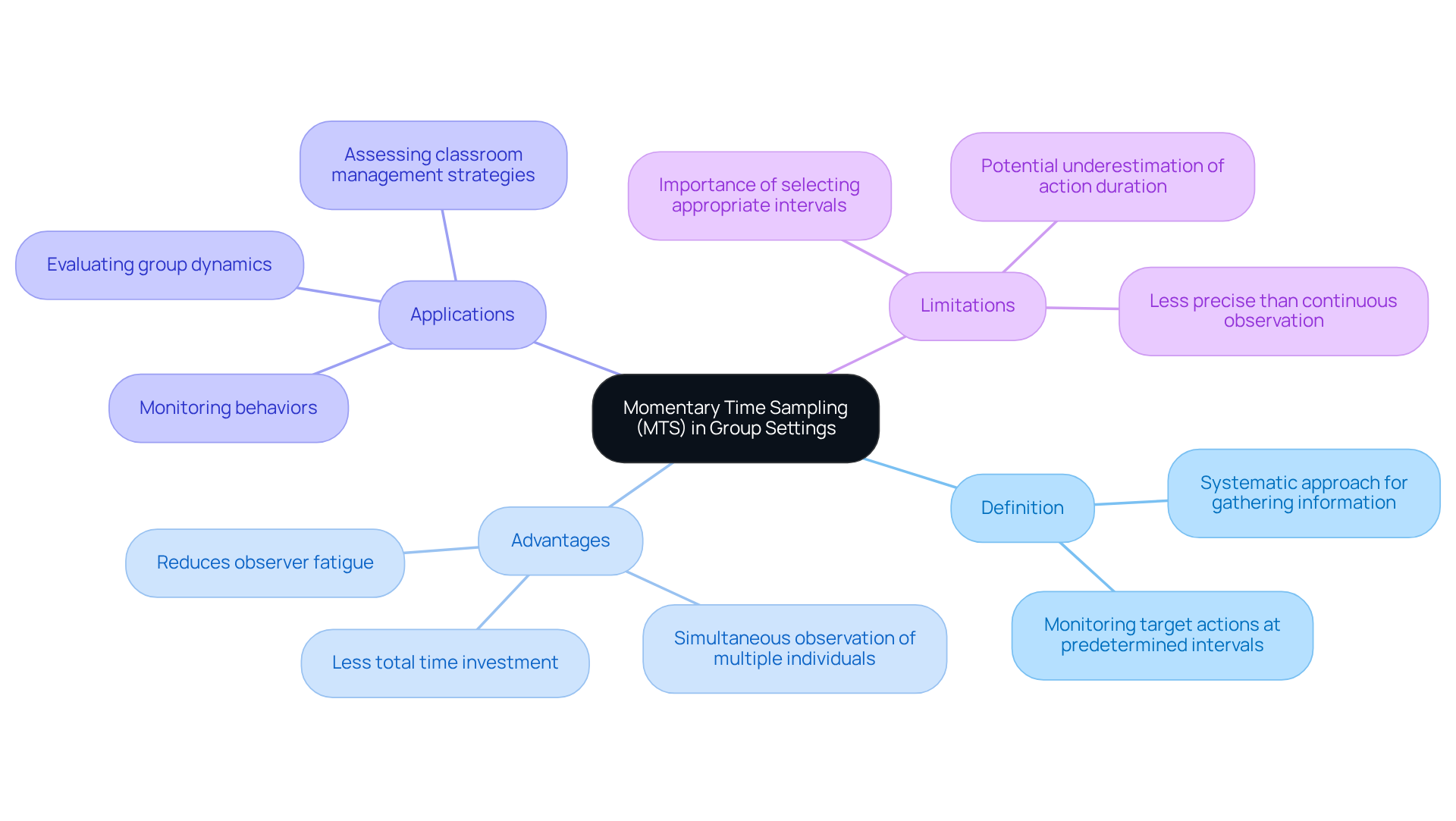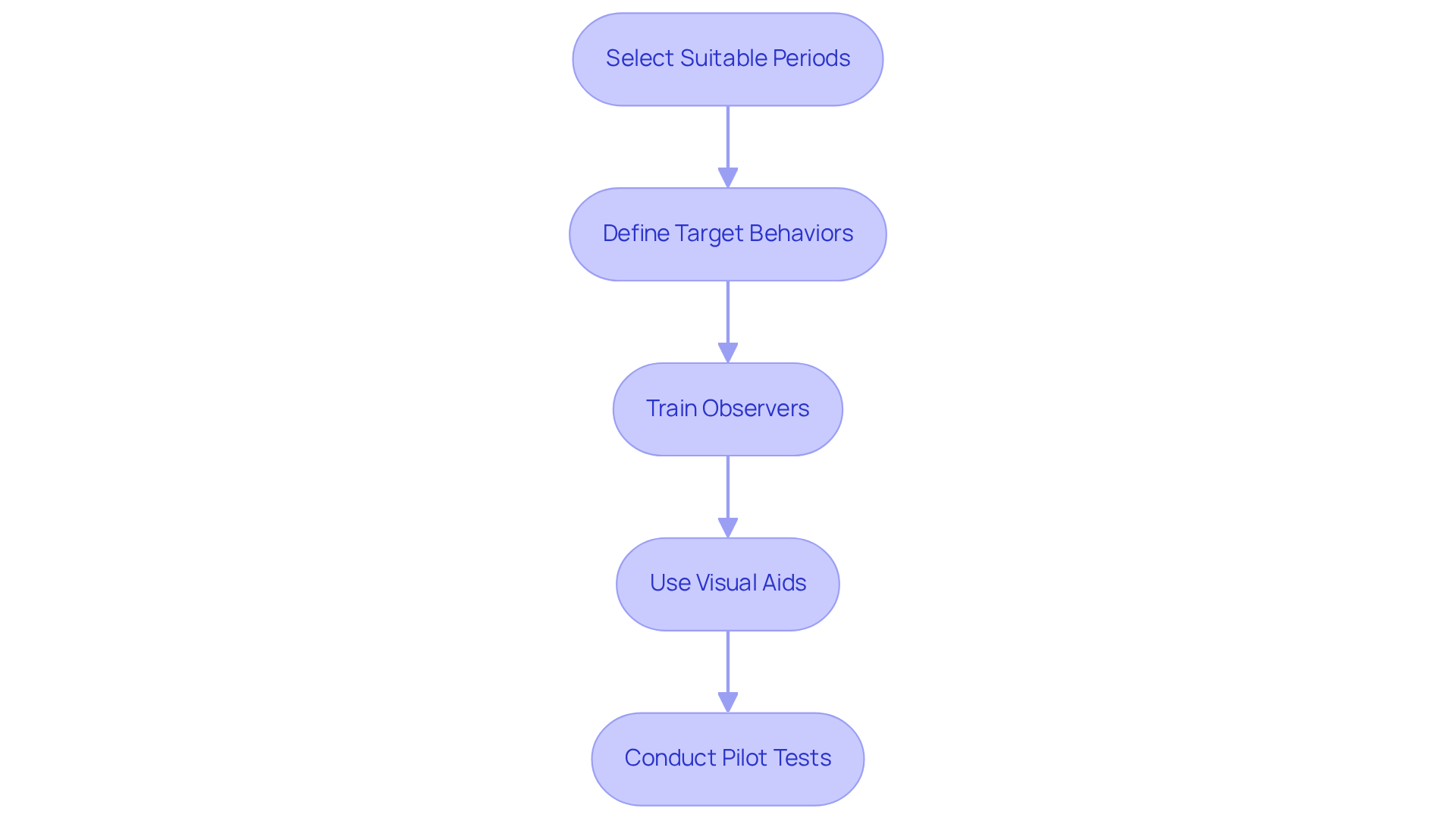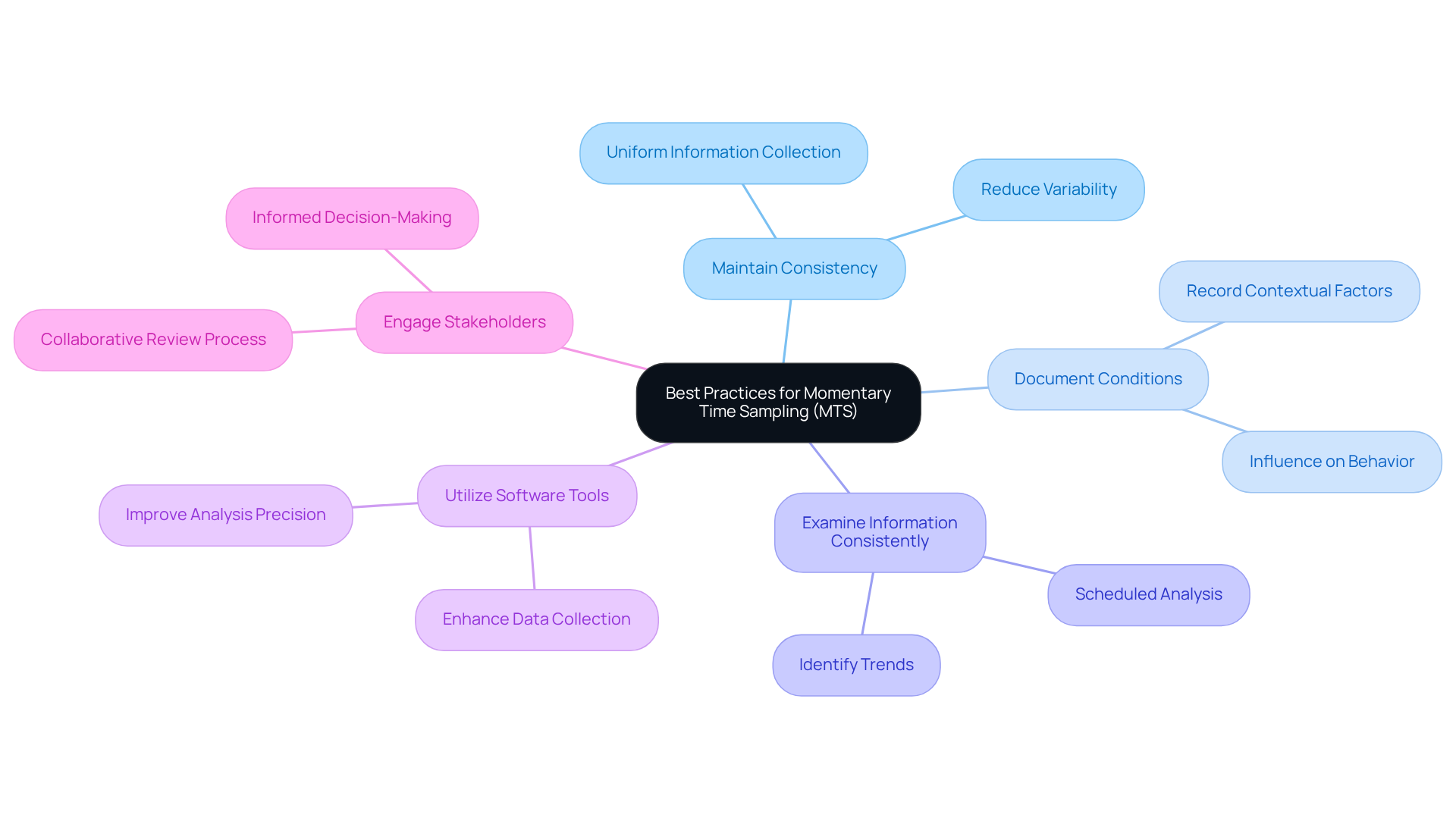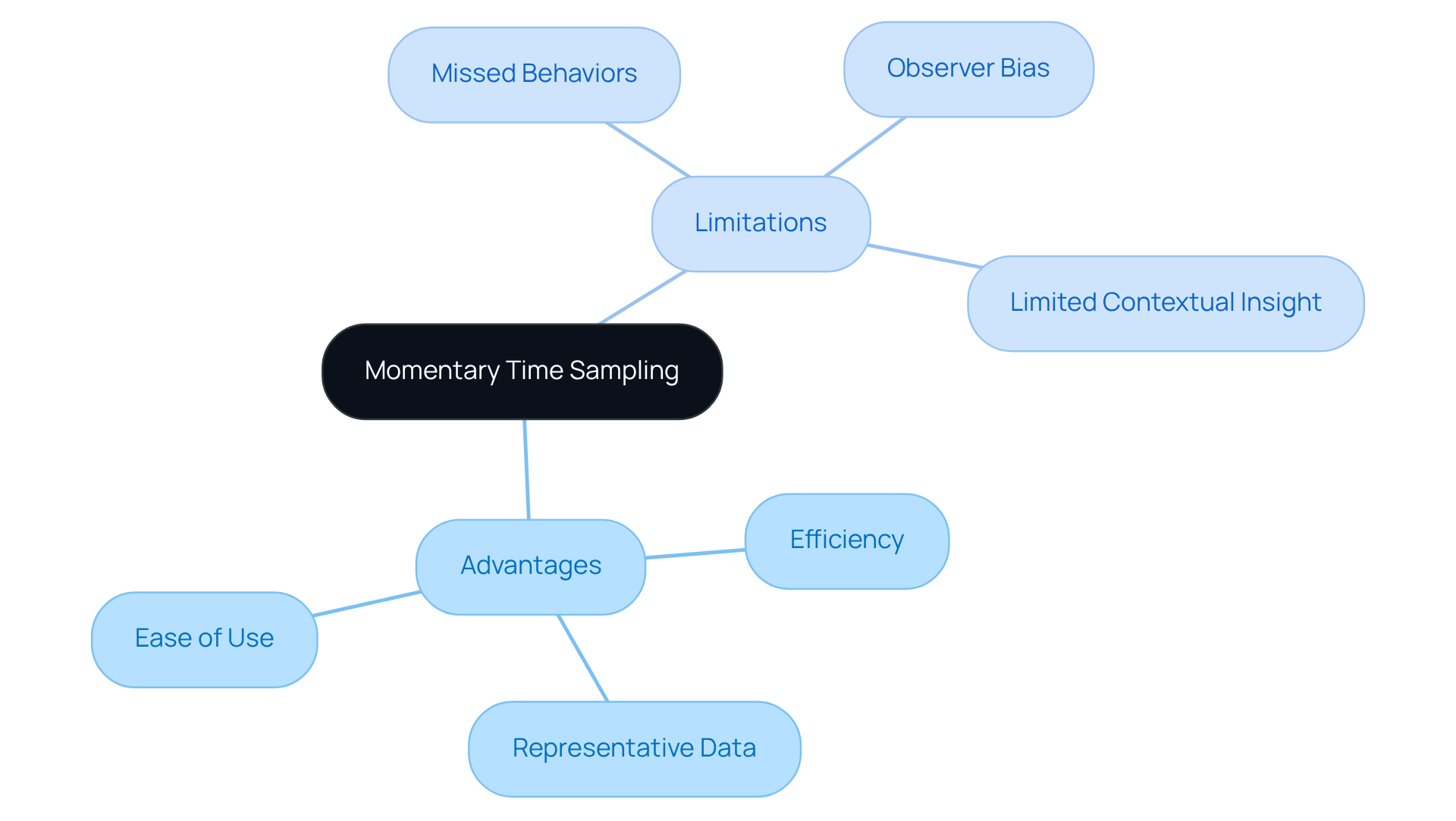June 29, 2025

The article examines the effective implementation of Momentary Time Sampling (MTS) in group settings, presenting its techniques, advantages, and limitations. MTS is a powerful method for efficient data collection on group behaviors at specific intervals. However, practitioners must recognize potential missed actions and observer bias. Thus, proper training and clear definitions are essential for achieving reliable results.
The demand for Board Certified Behavior Analysts (BCBAs) is on the rise, highlighting the critical need for effective methodologies in behavioral analysis. One such methodology, Momentary Time Sampling (MTS), stands out as an essential tool. This systematic approach enables practitioners to gather valuable insights into group behaviors without the necessity for continuous observation, making it particularly advantageous in environments where monitoring multiple individuals simultaneously is paramount.
However, while MTS offers significant benefits, it also presents inherent challenges, including the risk of missed behaviors and observer bias. How can practitioners master this technique to maximize its effectiveness while navigating these limitations? By reflecting on these questions, one can begin to appreciate the importance of employing reliable recruitment platforms like Hire ABA, which can connect you with qualified BCBAs who are adept in utilizing MTS. Embrace the opportunity to enhance your practice with the right talent today.
With the demand for Board Certified Behavior Analysts (BCBAs) , understanding effective methodologies like Momentary Time Sampling (MTS) is crucial. MTS serves as a systematic approach for gathering information in behavioral analysis, specifically designed to monitor and document target actions at predetermined intervals. In group settings, this method utilizes momentary time sampling for groups by observing individuals and recording whether a target action occurs precisely when the timer indicates.
This approach is particularly advantageous in scenarios where continuous monitoring is impractical, as it enables practitioners to employ momentary time sampling for groups to gather meaningful insights on group behaviors without overwhelming the observer. Momentary time sampling for groups plays a vital role in evaluating group dynamics by facilitating the simultaneous observation of multiple individuals, which reveals patterns of collective conduct. As Katherine Jester, a Board Certified Behavior Analyst, aptly notes, 'Discontinuous data requires less total time investment, but it can be even trickier to track.'
By clearly defining momentary time sampling for groups in this context, practitioners can effectively assess both group interactions and individual behaviors, thereby enhancing their understanding of behavioral patterns across various environments. However, it is essential to consider the limitations of MTS, such as the potential for underestimating action duration, as it captures activity only at specific moments. Selecting appropriate observation intervals, such as every 2 or 5 minutes for less frequent actions, is critical for effective data collection.
As the demand for BCBAs continues to rise, mastering and implementing MTS effectively becomes increasingly important for practitioners aiming to enhance their analytical capabilities.

To implement Momentary Time Sampling effectively, consider the following techniques:

To maximize the effectiveness of Momentary Time Sampling (MTS), implementing best practices is essential:
Frequent examination of information from MTS studies is essential for utilizing momentary time sampling for groups, as it enables practitioners to modify their strategies based on real-time insights. By following these best practices, professionals can guarantee that their information gathering and analysis efforts result in significant outcomes in Applied Behavior Analysis (ABA) therapy. The case study 'Driving Action through Information Stories' emphasizes that insights must lead to tangible outcomes, highlighting the significance of effective information management.

Momentary Time Sampling (MTS) presents several notable advantages and limitations that are crucial for practitioners to consider:
Advantages:
Limitations:

Mastering Momentary Time Sampling (MTS) is crucial for behavior analysts, especially in group settings where continuous observation is impractical. This systematic approach provides a structured method for capturing behavioral data at specific intervals, enabling practitioners to gain valuable insights into individual actions and group dynamics. By effectively implementing MTS, behavior analysts can significantly enhance their analytical capabilities and contribute to the advancement of Applied Behavior Analysis.
Throughout this discussion, several key techniques and best practices for implementing MTS have been emphasized:
These are essential steps in ensuring the reliability and validity of the collected data. Furthermore, understanding the advantages—such as efficiency and representative data—alongside the limitations, including potential observer bias and missed behaviors, is vital for practitioners aiming to optimize their data collection methods.
In light of these insights, practitioners are urged to embrace Momentary Time Sampling as a powerful tool in their behavioral analysis toolkit. By adhering to best practices and continually refining their techniques, behavior analysts can ensure that their data collection efforts yield meaningful outcomes. The ability to effectively analyze and respond to behavior in group settings not only enhances individual interventions but also fosters a deeper understanding of group dynamics, ultimately leading to more informed decision-making and improved therapeutic outcomes.
What is Momentary Time Sampling (MTS)?
Momentary Time Sampling (MTS) is a systematic approach used in behavioral analysis to monitor and document target actions at predetermined intervals, specifically designed for group settings.
Why is MTS important in group settings?
MTS is important in group settings because it allows practitioners to observe multiple individuals simultaneously, gathering meaningful insights on group behaviors without the need for continuous monitoring.
How does MTS work in practice?
In practice, MTS involves observing individuals and recording whether a target action occurs precisely at the moment indicated by a timer, allowing for the assessment of both group interactions and individual behaviors.
What are the advantages of using MTS?
The advantages of using MTS include the ability to evaluate group dynamics effectively, reduce the total time investment required for data collection, and facilitate the observation of collective conduct patterns.
What are some limitations of MTS?
Limitations of MTS include the potential for underestimating action duration, as it only captures activity at specific moments, which may not provide a complete picture of behaviors.
What should practitioners consider when using MTS?
Practitioners should consider selecting appropriate observation intervals, such as every 2 or 5 minutes for less frequent actions, to ensure effective data collection and accurate insights.
Why is mastering MTS becoming increasingly important for practitioners?
Mastering MTS is becoming increasingly important for practitioners, especially as the demand for Board Certified Behavior Analysts (BCBAs) is projected to increase by 25% by 2026, enhancing their analytical capabilities in behavioral analysis.
Our expert recruitment strategies and AI-driven sourcing ensure that you receive top-notch candidates quickly, without compromising on quality. Whether you’re looking for BCBAs, Clinical Directors, or RBTs, we’ve got you covered.